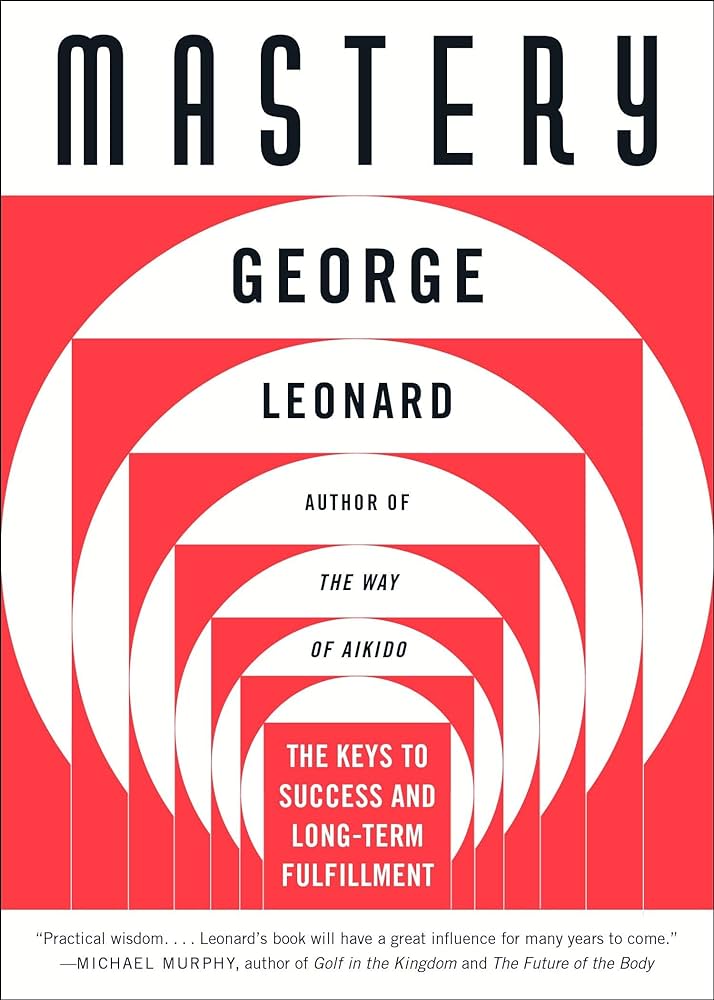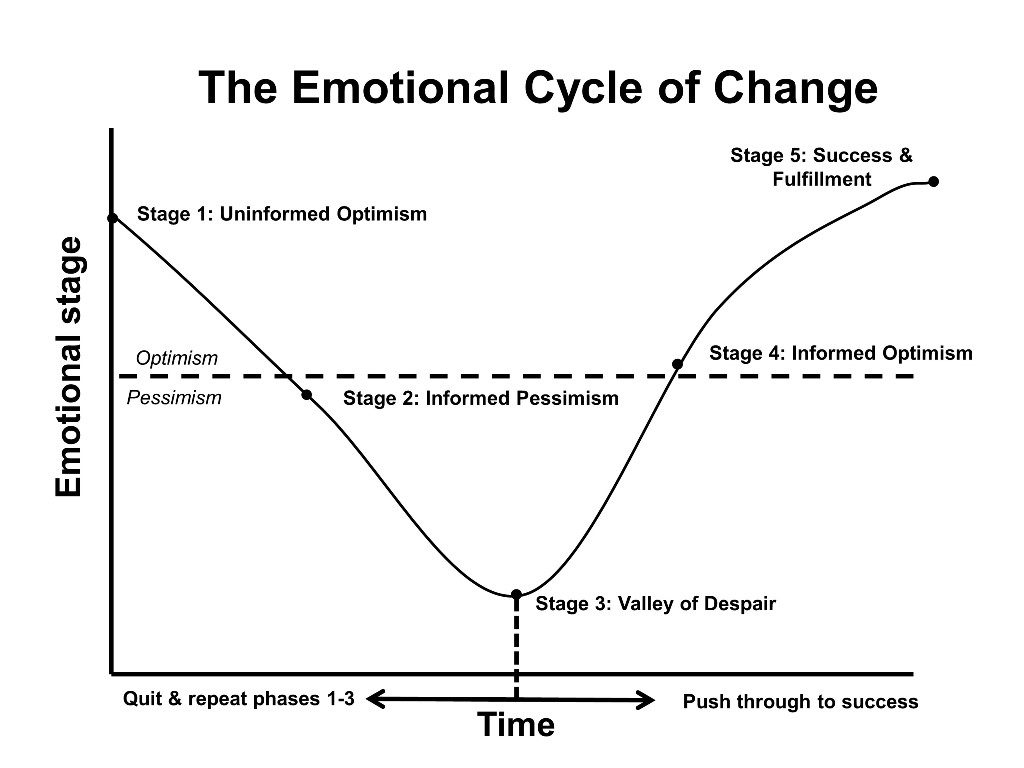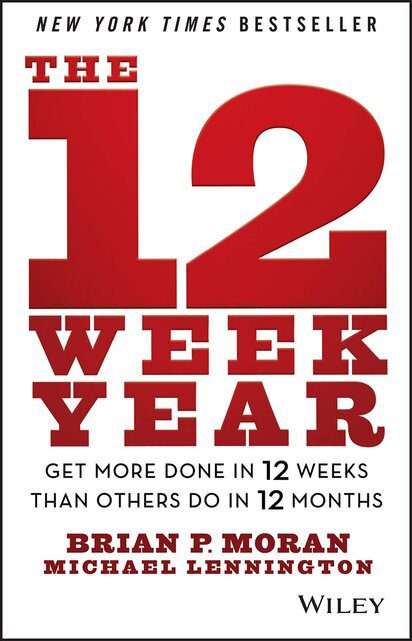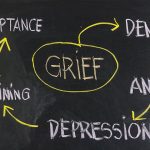Success is never guaranteed, but struggle is guaranteed on your path to success. Overnight success usually takes a lot of practice and time. The relentless pursuit of sustained excellence is an uphill journey that takes an average of 10,000 hours. As the saying goes, we get rewarded publicly for what we diligently practice in private. There will be plateaus, valleys of distress, peaks, valleys, and rollercoasters of ups and downs. If you are not feeling a bit of pain, struggle, discomfort and stretching while trying to achieve your goals, you are probably not aiming high enough. The beginning of any goal is usually exciting, the middle is messy, and the journey is rewarding.
“ If our life is a good one, a life of mastery, most of it will be spent on the plateau. If not, a large part of it may well be spent in restless, distracted, ultimately self-destructive attempts to escape the plateau.”
I have been trying to speak French since 2010, and I have tried almost everything. I started out attending a formal school of French Language learning (Nigerian French Language Village) for nine months, immersion in a neighbouring francophone country immediately afterwards (Benin Republic) for six months, and have been listening to French music and podcasts and watching French movies ever since. It’s been a rollercoaster of ups and downs, rapid progress, followed by frustration when I have to speak and I can’t find the words. Thirteen-plus years in, I don’t speak impeccable French yet, but I am not where I used to be. I have had to embrace the plateaus and keep putting in the effort required to speak French like a native. I have had to be patient, persistent, endure, and embrace the struggle. As American Writer Hal Borland once said, “Knowing trees, I understand the meaning of patience. Knowing grass, I can appreciate persistence.”
“Knowing trees, I understand the meaning of patience. Knowing grass, I can appreciate persistence.” – Hal Borland
The plateau is a constant, especially when you are attempting hard things such as running a marathon (hitting the wall), learning a foreign language (the block) or learning a programming language (the feeling that you are not smart enough). I have been there several times as I have explored running multiple marathons. I am presently getting advanced in my French language abilities and have been trying to learn various programming languages since the beginning of the COVID-19 lockdown. It’s been a rollercoaster to navigate these plateaus, but they are necessary for getting to mastery.

There’s really no way around it. Learning any new skill involves relatively brief spurts of progress, each of which is followed by a slight decline to a plateau somewhat higher in most cases than that which preceded it.
The Plateau: You can’t skip stages 1
In the actual learning experience, progress is less regular; the upward spurts vary; the plateaus have their own dips and rises along the way. But the general progression is almost always the same. To take the master’s journey, you have to practice diligently, striving to hone your skills, to attain new levels of competence. But while doing so—and this is the inexorable fact of the journey—you also have to be willing to spend most of your time on a plateau, to keep practicing even when you seem to be getting nowhere
Days and weeks pass with no apparent progress. There you are on that damned plateau. For most people brought up in this society, the plateau can be a form of purgatory. It triggers disowned emotions. It flushes out hidden motivations.
Practice, the path of mastery, exists only in the present. You can see it, hear it, smell it, feel it. To love the plateau is to love the eternal now, to enjoy the inevitable spurts of progress and the fruits of accomplishment, then serenely to accept the new plateau that waits just beyond them. To love the plateau is to love what is most essential and enduring in your life.
“How do you best move toward mastery? To put it simply, you practice diligently, but you practice primarily for the sake of the practice itself. Rather than being frustrated while on the plateau, you learn to appreciate and enjoy it just as much as you do the upward surges.”

The Valley of Despair
In their book, The 12 Week Year: Get More Done in 12 Weeks than Others Do in 12 Months, authors Brian P. Moran and Michael Lennington write:

Whenever we decide to change our lives, we experience an emotional roller coaster. Psychologists Don Kelley and Daryl Connor describe this phenomenon in a paper called “The Emotional Cycle of Change.” Kelley and Connor’s emotional cycle of change (ECOC) includes five stages of emotional experience. The ECOC is the description of the emotional impact of change. By being aware of this cycle, you are less likely to be derailed by negative emotions and are able to manage change more effectively.
Regardless of the change you choose to make, you will experience this cycle. You can plot new relationships, new purchases, new jobs, and new neighborhoods on the ECOC, and it’s always the same. Sometimes the highs are higher, and sometimes the lows are lower; sometimes the cycle is shorter, and other times it’s longer, but in all cases, you will experience this cycle when you decide to make a change in your life.
There are five stages that people move through emotionally when changing their behavior:
I. Uninformed Optimism
II. Informed Pessimism
III. Valley of Despair
IV. Informed Optimism
V. Success and Fulfillment
Valley of Despair
This is when most people give up. All of the pain of change is felt and the benefits seem far away or less important—and there is a fast, easy way to end the discomfort: Going back to the way you used to do things. After all, you rationalize that it wasn’t so bad before. If you quit on change when you are in the valley of despair, you go back to the first stage, uninformed optimism, which is a whole lot more fun than being in the valley!
It is precisely at this stage—the valley of despair—that having a compelling vision is critical. Nearly all of us have had times in our lives when we wanted something so badly we were willing to pay any price and overcome any hurdle to get it. Wanting passionately to reach your vision, combined with commitment and the tools and events of process control, is the way through the valley to the next stage of change.
Sometimes the highs are higher, and sometimes the lows are lower; sometimes the cycle is shorter, and other times it’s longer, but in all cases, you will experience this cycle when you decide to make a change in your life.
The key to navigating the plateaus and the struggle is to be prepared and understand that the peaks and valleys are part of the process. As the Scandinavians would often say, “There’s no such thing as bad weather, only unsuitable clothing.” The key to weathering the storm or bad weather is to be prepared with suitable clothing appropriate for the challenge.
Meditations
Daily Calm with Tamara Levitt – Conflict
One of the misperceptions of meditation is that it creates so much peace that we do not encounter conflict moving forward. Like it or not, conflict is a part of life: clashes over opposing opinions, disputes around legal matters, quarrels within relationships, and controversies in the public. Through the course of our lives, conflict is sure to arise in different forms. Practicing mindfulness doesn’t remove conflict; it gives us the inner capacity to withstand and learn from our conflict.
Mindfulness helps us discover wisdom in conflict and see these challenges as opportunities for growth. The key to this process is looking deep within to understand our reactions to challenging, even volatile situations. Each of us has ingrained patterns of thoughts and emotions that almost seem to kick into autopilot when faced with a threat or a challenge. When we are aware of these automatic reactions, we can shift our behaviour and reach for other mindfulness tools.
Conflict is as much a part of life as ice cream, headaches, and rainy Saturday afternoons. If we are mindful, it is to be expected. We can see conflict as a teacher as an opportunity to cultivate patience, nonjudgment, and deep listening.
“Difficulties are meant to rouse, not discourage. The human spirit is to grow strong by conflict.”― William Ellery Channing
Daily Jay with Jay Shetty – Embrace Impermanence
Mandalas are often used as a focal point for meditation. It can take days to complete these elaborate designs; then, as part of a ceremony, they are wiped away. The ritual underscores the principle of impermanence. It serves as a reminder that everything in life, no matter how cherished, will change. Impermanence is a push-pull between beauty and sadness; we recognize the exquisiteness of something and desire grief over the fact that it is fleeting. In a way, that grief is a gift because it helps to deepen our appreciation.
Impermanence can also work the other way. It can help us see the extraordinary in the everyday. Impermanence is bittersweet. Sometimes, it feels like a burden, but it is also a blessing, one that can make us cherish more of our time here.
Podcast
- Productivity Expert: What’s WRONG w/ Modern Work (+ How To Fix It) | Cal Newport X Rich Roll
All the best in your quest to get better. Don’t Settle: Live with Passion.



Comments are closed.